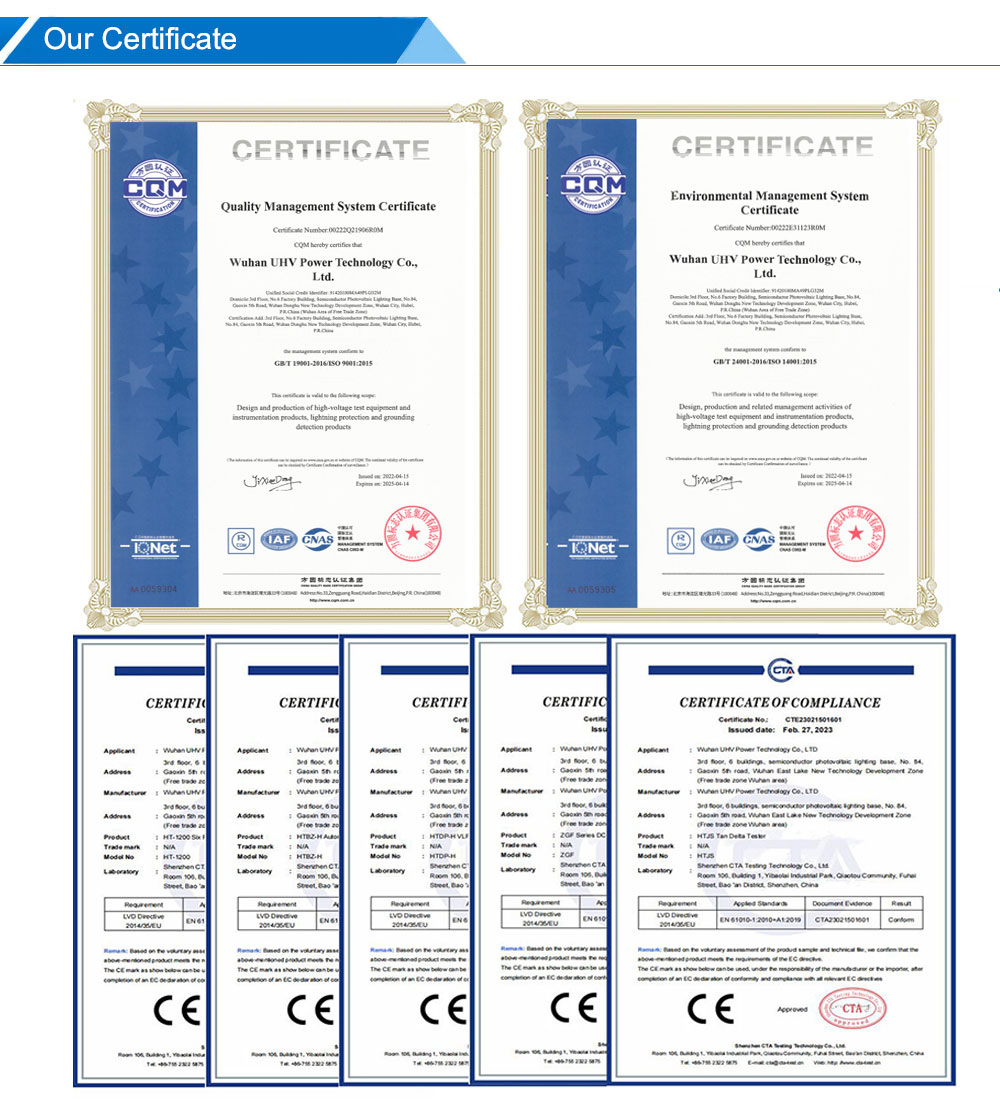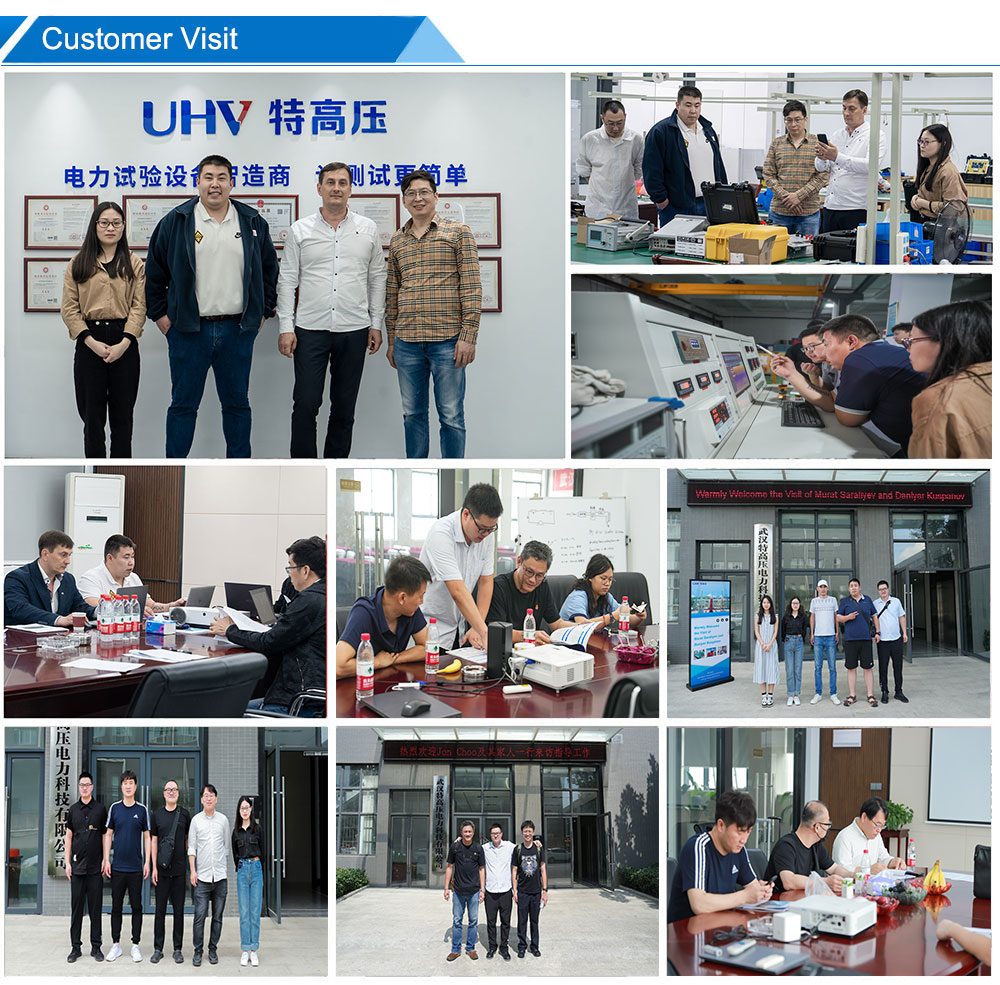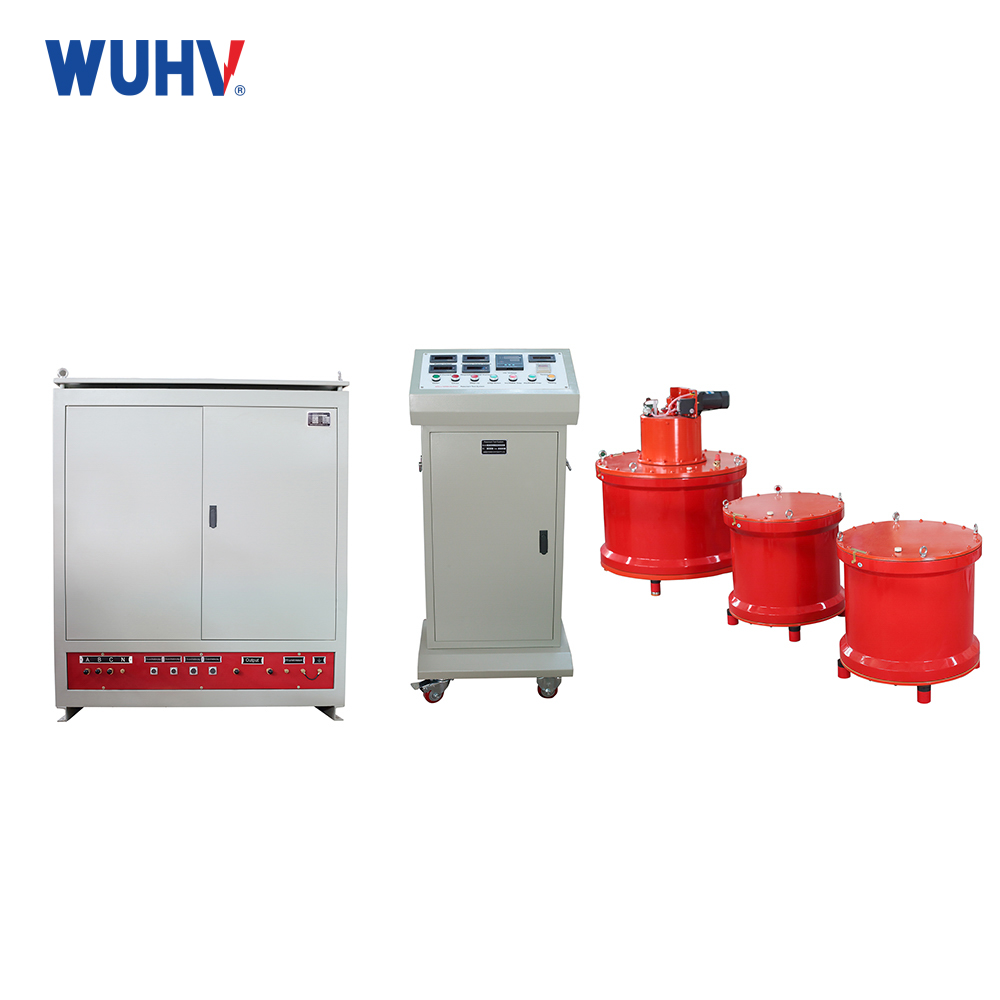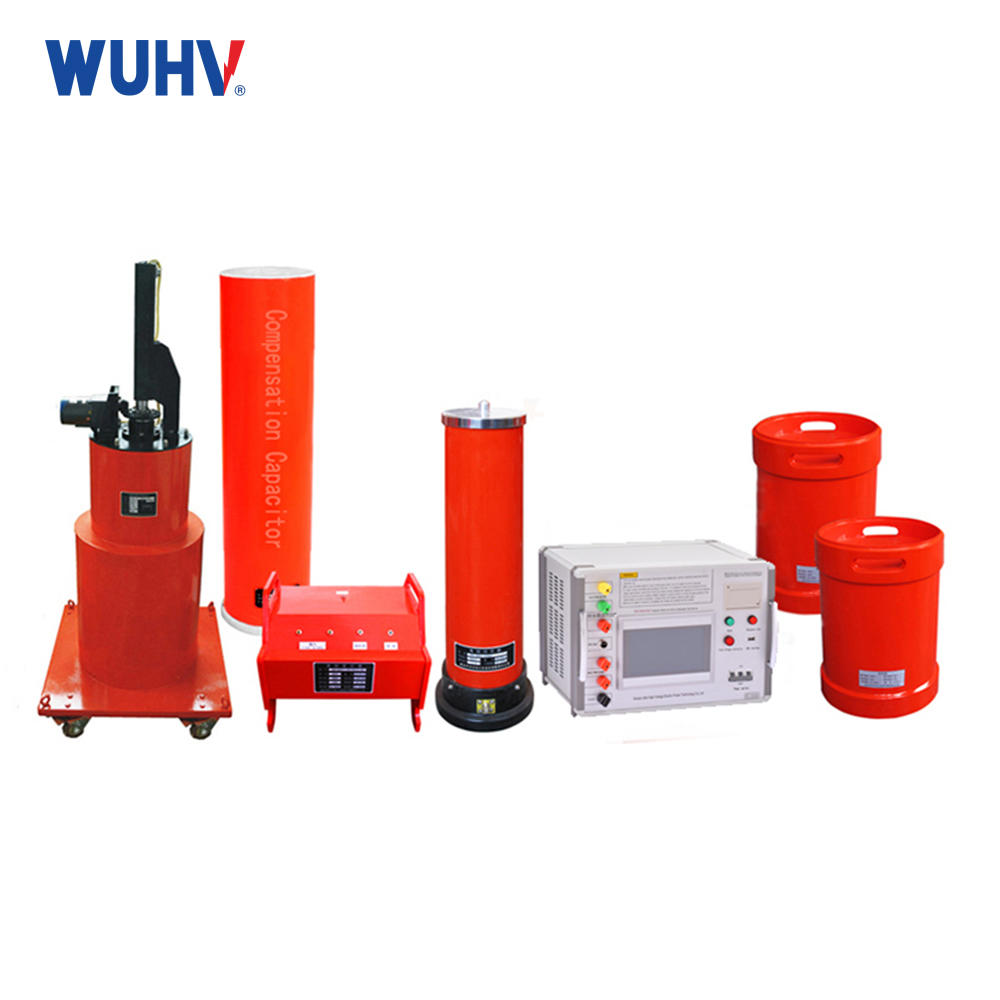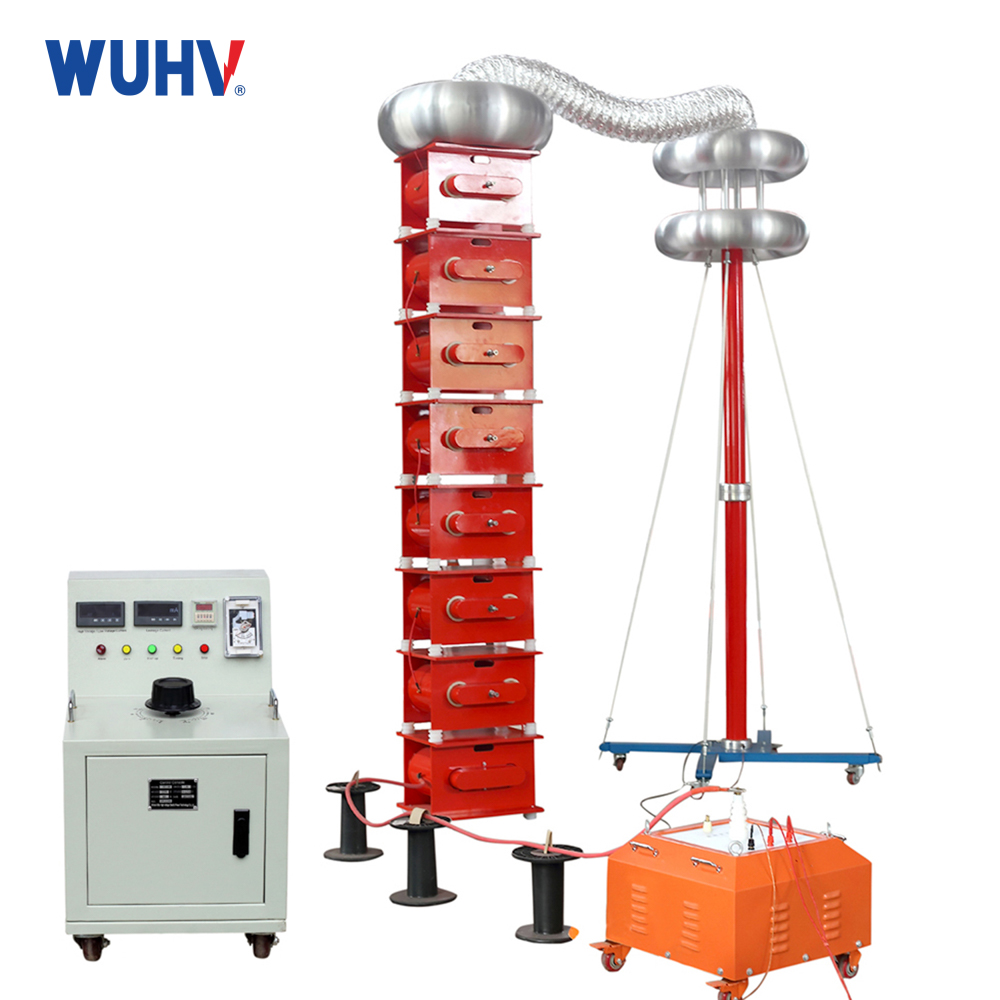
Technical parameters
Rated output voltage | 0~50kV(AC Valid values) |
Output frequency | 45~65Hz |
Resonant voltage waveform | Pure sine wave, waveform distortion rate ≤ 1.0% |
Work system | Under full power output, the general continuous working time is 5min |
Quality factor | 10~40 |
Frequency adjustment sensitivity | 0.1Hz, instability< 0.05% |
Maximum test capacity | 5000kVA and below |
Working power supply | 220V or 380V±10%, power frequency 50Hz±5% |
Series product configuration (scope of application (AC withstand voltage test of generator or motor with outlet voltage 20kV and below, frequency: 50Hz±2Hz))
Product model | Control Console
| Reactor | Excitation transformer device | Voltage divider | Applies to |
HTXZ(L) - 50/50 | 10kW/220V | 50kV/1A 1 unit | 10kW/5kV | 50kV/500pF | Dynamo 0.07~0.13μF.10Kv cable(300mm2) ≤1.0km |
HTXZ(L) - 75/50 | 15kW/380V | 50kV/1.5A1 unit | 15kW/5kV | 50kV/500pF | Dynamo 0.13~0.2μF.10kV cable(300mm2) ≤1.5km |
HTXZ(L) - 225/50 | 25kW/380V | 50kV/1.5A 2 unit .50kV/1.5A1 unit | 25kW/5kV | 50kV/500pF | Dynamo 0.2~0.27μF.10kVcable(300mm2) ≤2.5km |
HTXZ(L) - 360/50 | 30kW/380V | 60kV/2A 2 unit. 60kV/2A1 unit | 30kW/5kV | 50kV/500pF | Dynamo0.27~0.33μF |
Reference table of the capacity of generators commonly used in power systems
Model
| Manufacturer | Rated capacityMW | Rated voltagekV | Phase capacitanceμF | |
Thermal generators | T2-12-2 | / | 12 | 6.3 | 0.1 |
TQ-25-2 | / | 2 | 6.3 | 0.19 | |
TBC-30 | / | 30 | 6.3 | 0.2 | |
TB2-30-2 | / | 30 | 6.3 | 0.2 | |
TQN-50-2 | / | 50 | 10.5 | 0.209 | |
TB-60-2 | / | 60 | 10.5 | 0.25 | |
TQN-100-2 | / | 100 | 13.8 | 0.234 | |
WT23S-083AF3 | / | 300 | 15 | 0.29 | |
TB-320-2 | / | 320 | 20 | 0.3 | |
T264/640 | / | 600 | 20 | 0.368 | |
QF-30-2 | / | 30 | 6.3 | 0.1 | |
QF-60-2 | / | 60 | 6.3 | 0.234 | |
QF-60-2 | / | 60 | 10.5 | 0.33 | |
QFS-125-2 | Shanghai Electric Machinery Factory | 125 | 13.8 | 0.08~0.12 | |
QFSN-200-2 | Harbin Electric Machinery Factory | 200 | 15.75 | 0.19~0.21 | |
QFQS-200-2 | Dong Fang Electric Factory | 200 | 15.75 | 0.1928~0.21 | |
QFS-300-2 | Shanghai Electric Machinery Factory | 300 | 18 | 0.16~0.2 | |
QFSN-300-2 | Shanghai Electric Machinery Factory | 300 | 18 | 0.18~0.2 | |
QFSN-600-2 | / | 600 | 20 | 0.234 | |
ATB-2 | GE Corporation of the United States | 352 | 23 | 0.268 | |
TBB-200-2 | Former Soviet Union | 200 | 15.75 | 0.107 | |
TBB-500-2 | 500 | 20 | 0.25 | ||
TBB-320-2 | Former Soviet Union | 320 | 20 | 0.31 | |
TBB-800-2 | 800 | 24 | 0.25 | ||
2-105*234 | Westinghouse Corporation of America | 600 | 20 | 0.2 | |
50WT23E-138 | ABB | 600 | 22 | 0.253 | |
Sync the camera | TT-15-8 | / | 15 | 6.6 | 0.108 |
TT-30-6 | / | 30 | 10.5 | 0.2 |
Nickname: Resonant Test System; Variable Frequency Resonant; Variable Frequency Resonant Test; series resonant


Feature
1. The series resonant device has overvoltage, overcurrent, zero start, system detuning (flashing) and other protection functions, overvoltage and overcurrent protection value can be adjusted according to user needs, and the flashback protection action when the sample flashes and can record the flashback voltage value for test analysis.
2. The weight of the whole series resonant device is very light, the maximum does not exceed 40kg, which is convenient for on-site use.
3. The series resonant device has four working modes, which is convenient for users to choose flexibly according to the site situation, and the working modes of increasing the test speed are: fully automatic mode, manual mode, automatic tuning manual boost mode.
4. It can store and print data in different places, and the stored data number is a number, which is convenient to help users identify and find.
5. The frequency starting point of the series resonant device can be set arbitrarily within the specified range when the frequency is automatically swept, and the frequency sweeping direction can be selected up and down, while the large LCD screen displays the scanning curve, which is convenient for users to intuitively understand whether the resonance point is found.
6. The use of DSP platform technology, which can easily add or remove functions and upgrades according to user needs, and also make the man-machine exchange interface more humane.



